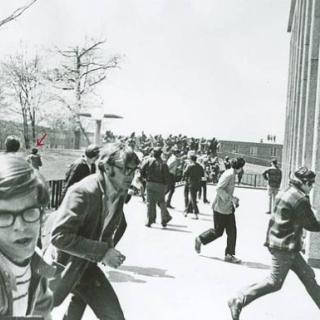Advertisement
As a child in the sixties living in Poindexter Village, I remember running and playing in the safe surroundings of the apartment buildings on our court. I didn’t know, or care at the time, that Poindexter Village was one of the oldest public housing communities in the United States.
I had no clue that it was named after the honorable Reverend James Poindexter who, in 1882, was the first African-American to serve on the Columbus Board of Education and was also the first elected to Columbus City Council in 1880. He was the Pastor of the historic Second Baptist Church from 1848 to 1898. I didn’t know any of that history. I just knew we lived in the “Village.”
As I used chalk to draw pictures on the sidewalk, little did I know that I might possibly be drawing on the same piece of ground that Aminah Brenda Lynn Robinson, the great African American artist, had drawn on when she lived there from 1940 until 1957, the year after I was born, before I could meet her in the village and possibly become a person in her “A Street Called Home” series about Poindexter Village and Mt. Vernon Ave a place called The Blackberry Patch; another neighborhood that became a part of history after its destruction.
At the time I didn’t know that I would graduate from the same school, East High School, as jazz musician drummer Jimmy Rogers. Jimmy played for and toured with other great iconic African American musicians such as Sammy Davis Junior and the magnificent Miles Davis. As I listened to my father playing the music of Sammy and Miles I had no idea that the drummer was at one time an 11-year-old who became a part of the history of Poindexter Village when he shook the hand of President Franklin Delano Roosevelt on October 12, 1940.
Roosevelt came to Columbus to officially open Poindexter Village to the “villagers” that would live there and also become members of the history of the “Village.” Rogers was a child, like me who grew up in the “Village.”
As I watch the destruction of Poindexter Village, I reflect on the many memories that I have of living in the apartments. The term “Village” wasn’t just a noun, it was an action word. It meant there were elders in the immediate area that took care of you while your parents went to work. They watched over you while you played in the courtyard. They fed you so you wouldn’t be hungry and gave you a spanking if you got out of line and told your parents who gave you one too when they got home from work. They taught us respect for our elders and respect for ourselves and each other.
As I take pictures of the destruction of this neighborhood, the “Village,” I think about the many people who have lived there, moved away and returned there, who got married there and raised their families there, who grew up and grew old there and some who were born and died there in the “Village.”
I think about the history, the Black History of the “Village” especially during this year, in February because I know that this time next year, there will only be a plague placed on a piece of grass to remind those who will read it that Poindexter Village did exist. That at one time there was a Black community that cared for its neighborhood and loved its neighbors. That at one time in the history of the state of Ohio, in the city of Columbus, in the heart of downtown, there lived a group of Black people who supported each other, loved each other, helped one another by watching over their children while they went to work to provide for their family, and respected one another.
What makes a neighborhood and how does it become a part of history that will remain, even after its destruction, in the hearts and minds of its people? Is it the mention of it in the history books that keep it alive? Does the spirit of the neighborhood live in the “history” or the people who remember and pass on the history to their family, friends and community? The answer to these questions can be summed up in one sentence: What makes a neighborhood a neighborhood is the people who live in it and their spirit lives on in me and in every member of the history of Poindexter Village.



